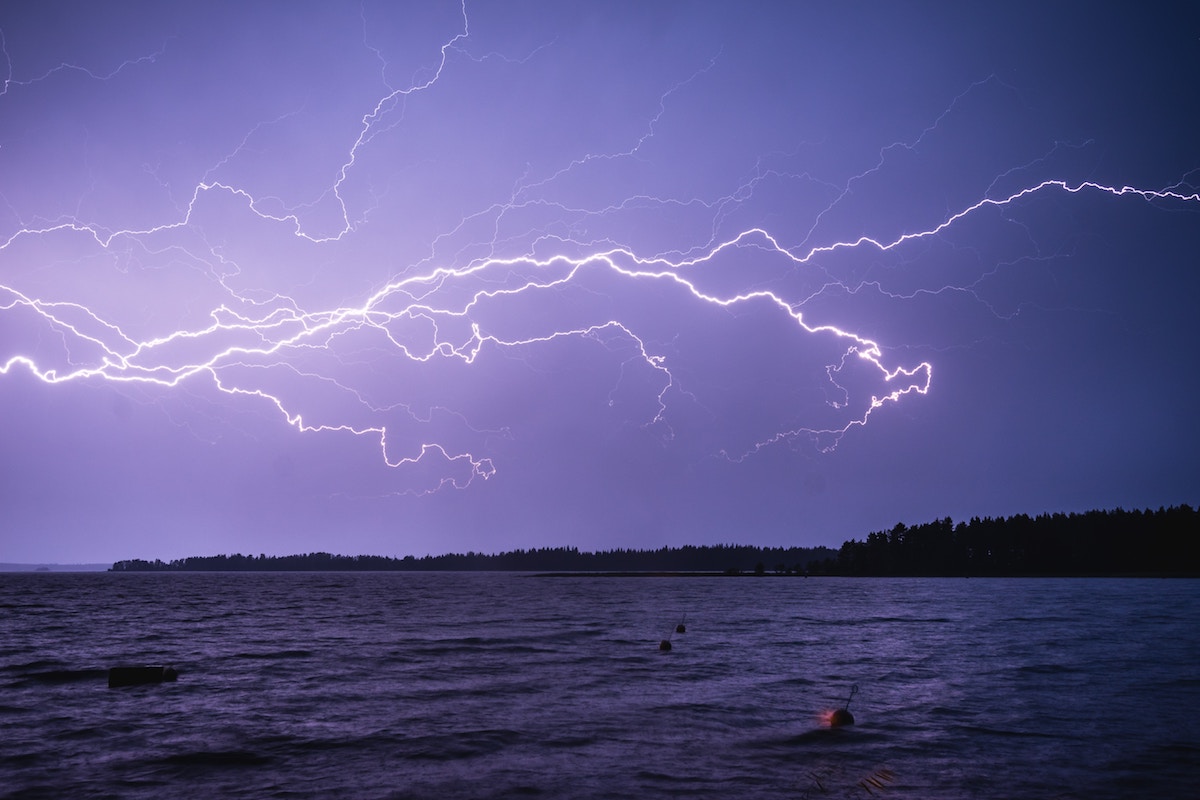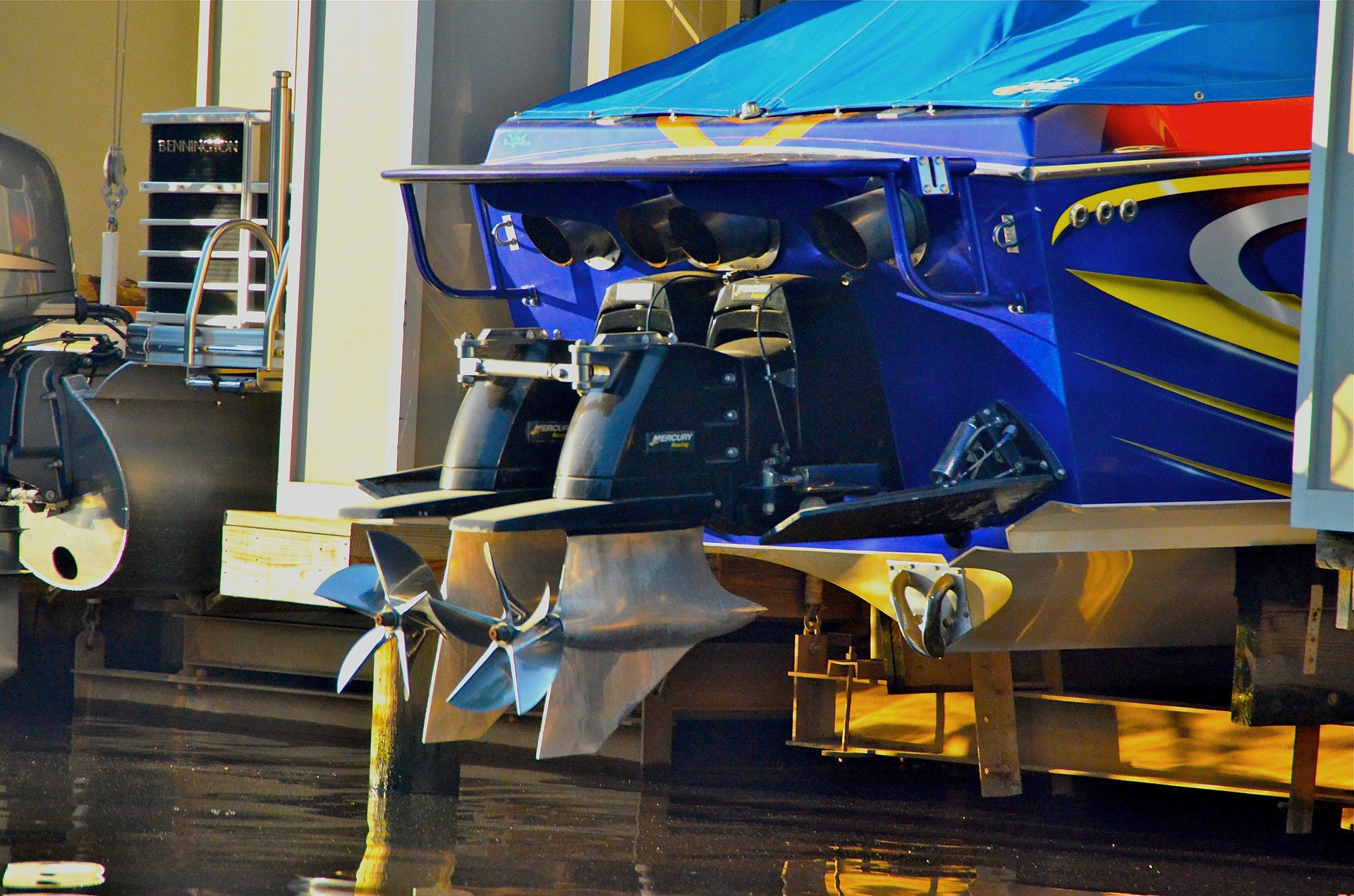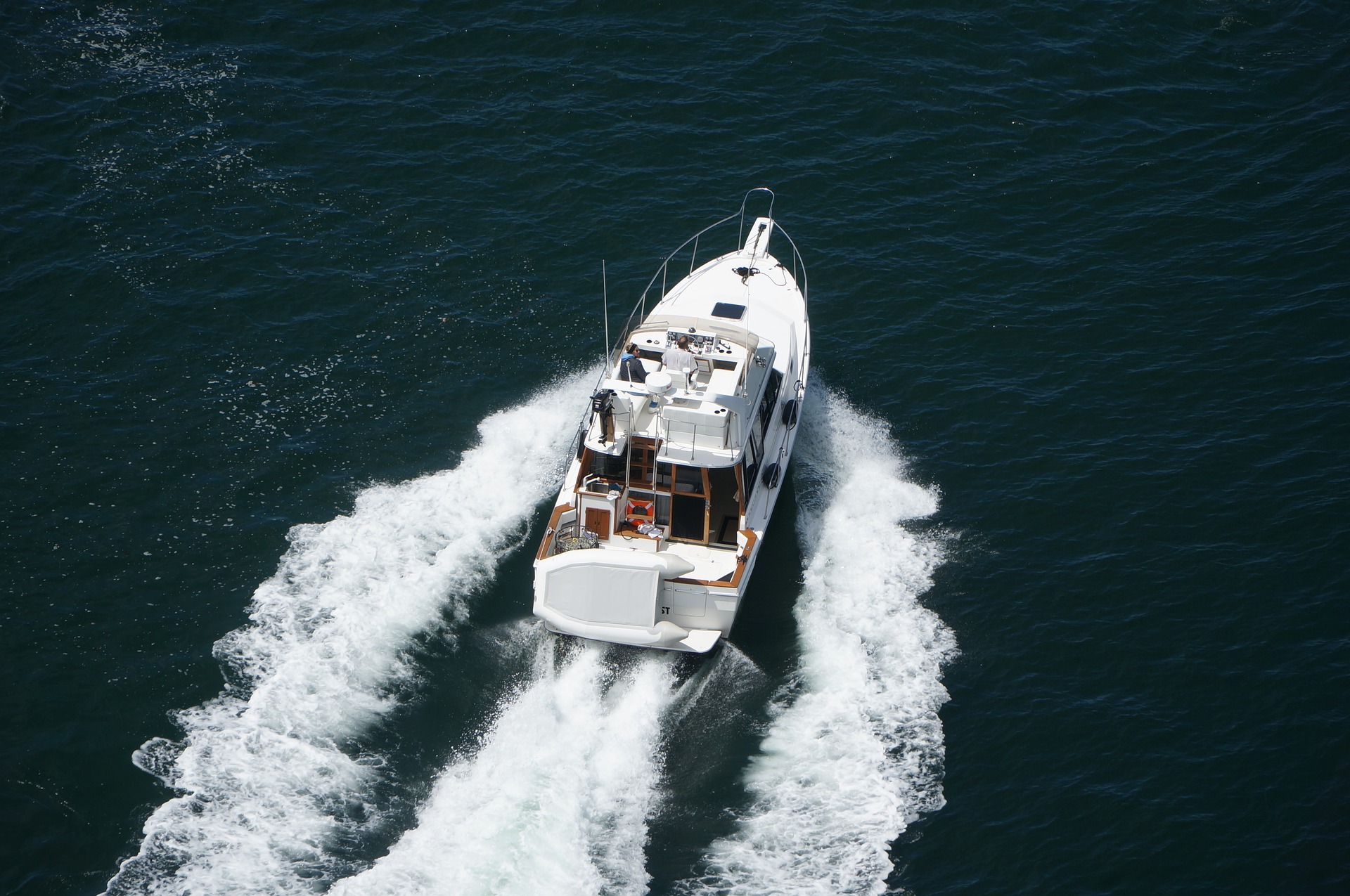
The summer is on its way, and with it, sunshine, pool parties and, unfortunately, the danger of lightning for boaters–a bummer, we know. However, there are three simple boating safety tips that can help you steer clear of potential risks. When the thunder starts rumbling, do you know what to do?
- When in Doubt, Don’t Head Out: This one’s pretty simple but worth reiterating: if bad weather is forecasted to hit when you plan on being on the water, adjust your plans. Though some regions see thunderstorms nearly daily, they can often be predicted and scheduled around.
Remember that many summertime thunderstorms, especially in the southeast, tend to come in the afternoon. Always check the latest forecasts and current weather conditions before and during your trip to stay well out of the way of dangerous lightning strikes.
- The 30-Minute Rule: If you hear thunder while boating, seek shelter inside of your vessel if it is enclosed. Immediately stop swimming, tubing or doing other activities in or around the water and don’t resume them until there has been a break in the thunder for at least 30 minutes. Also, avoid touching metal surfaces and never use your VHF unless it is an absolute emergency during a lightning storm.
- Boat Lightning Protection: Lightning rods, also known as air terminals, can be installed on a boat and wired to a ground plate that would connect to and help insulate other metal objects on the vessel. During a lightning storm, you can protect your electronics by storing them in an onboard microwave, which will act as a Faraday cage–a container that, like a car, will protect whatever is inside of it from lightning.
By keeping track of the weather, following the 30-minute rule and protecting your boat before hitting the water, you can help reduce the risk of dangerous lightning strikes. Though getting struck by lightning is generally a rare occurrence, this is one force of nature you do not want to take your chances with. As always, stay safe, avoid those summer thunderstorms and have a great time while on the water!

Safe boating is something we always try to preach at Hi-Tide, and for good reason. We love boating but never at the expense of safety. See, when it comes to something inherently fun, it’s far too easy to get carried away and put the fun before responsibility. We get it. However, with this week having been Safe Boating Week, we were inspired to remind you of a few ways you can boat safely this season.
Safe Boating Week-Inspired Ways to Stay Safe on the Water
- Boating Safety Classes: OK, pros. We know you’re probably rolling your eyes here. You don’t need any stinkin’ boating safety class. Right? Wrong. Even the most practiced boater can get a bit rusty if he or she doesn’t brush up on the basics from time to time. Heck, you may learn something new. For the less practiced boater, taking a local boating safety class makes perfect sense to get a handle on the do’s and don’ts before hitting the water and putting others at risk.
- Vessel Safety Checks: The US Coast Guard will happily provide a vessel safety check, free of charge. Some have a misconception that safety violations will result in some kind of fines or other penalty but rest assured, these checks are simply to help ensure your boat is safe. Additionally, the USCG provides a handy boat safety checklist to help you examine your own vessel and make sure it’s ready for your next adventure.
- Life Jacket Fit: Life jackets (aka PFDs) are extremely important, literally life-saving boating safety devices. However, if they don’t fit properly, they won’t do you much good in an emergency. Learn how to properly fit a life jacket before buying them for yourself and your family.
Though Safe Boating Week is coming to a close, these tips can help you all season long. Brush up on your boating in local boating safety classes, get and perform boating safety checks and make sure your life jackets fit before hitting the water. Remember, boating is great fun, but only as long as we all commit to doing so safely. We’ll see you (safely) on the water.

We’ve all been there: you have an interest in a new hobby or lifestyle but don’t even know the questions to ask. Well, one question we often get is, what, exactly, is a boat elevator?
Thankfully, boat elevator lifts are pretty simple to explain. At Hi-Tide, we develop aluminum boat elevator lifts. This hardware attaches to your dock by attaching to either piling or seawall. When docking, you simply position your vessel over the lift platform, which is submerged in the water. Once in position, by operating the elevator lift, you can raise the submerged platform, which raises your vessel above the water.
As you may know, water (yes, even freshwater) can be quite corrosive and damaging to your vessel. Simply put, a boat elevator lift keeps the bottom of your vessel high and dry–in a good way. Why?
- Boats have been known to sink while docked, sometimes due to damage caused by rough waves.
- A vessel raised above the waterline avoid damage from the corrosive effects that water can have over time.
- With less wear on vessels, boats can better maintain their paint and are often far easier to clean than those left docked.
Even if your vessel is docked in tighter quarters, a boat elevator may be just right for your needs. Of course, if you have more questions about the benefits of boat lifts or more specifics on our very own aluminum elevator lifts, don’t be afraid to ask. Whether you’re a boating newcomer or experienced captain looking for some new hardware, we’re more than happy to share our passion with anyone in need of a lift.

Let’s be honest–Florida has just about two seasons: sweltering summer and blink-and-you’ll-miss-it winter. Even well into October, it’s not out of the question to have days reach the upper 80s (and even beyond), meaning Halloween is often more sweaty than scary. However, that also means beach, pool and, most importantly of all, boating weather is with us nearly all year long.
However, if you will be boating outside of the Sunshine State or if this season surprises us with some unseasonably cool weather (or even if not), you should take the change of seasons to prep for cooler temps and complete general maintenance after a busy summer.
Fall Boating Safety Tips
- Life Jackets are Mandatory: Yes, we all understand that life jackets can save lives, yet so many of us don’t bother wearing them when we hit the water. Whether it’s apathy, ignorance or a desire to look cool, there is no excuse for not having enough life jackets for every passenger and asking that everyone wear said life jackets. Though less a concern most of the year for Floridians, other places can see waters dip into dangerously low temperatures. A life jacket could easily keep someone above water in cold temperatures, saving his or her life.
- Check Your Lights: Even if you plan on getting back in before sunset, make sure all of your boat’s lights are working properly. It’s very easy to forget how quickly the sun begins to set in the fall months, and many get caught off guard. The last thing you want is to be forced to navigate in dark waters without fully operational lights.
- Complete Your Maintenance Checklist: With every season change, it’s a great opportunity to go through your maintenance checklist, checking for damage, doing a deep clean on your vessel and ensuring all safety equipment is tip-top. You do not want to have an emergency and realize your potentially life-saving equipment is out of date or too damaged to use.
- Watch the Weather: Fall weather can be unpredictable. Make sure you check a forecast and continue to keep tabs on the meteorological outlook throughout the day to ensure you’re dressed for the right temperatures and can clear the way for any quickly forming storms.
No matter where you’re hitting the water, make sure your vessel is safe to operate, you and all passengers are wearing life jackets, you keep an eye on the weather and ensure your lights are functional before getting into some quality fall boating. Boat safely and we’ll see you on the water!

There are neat freaks, clutter kings/queens and everyone who falls somewhere in the middle. Oftentimes you only need to look at someone’s car to tell where along the neat/dirty spectrum they are–from immaculately washed and waxed to “WASH ME” scrawled in caked-on dirt. Regardless, we are absolutely not judging…until you move the conversation to boats.
Not washing your boat can cause a multitude of cosmetic and, more importantly, performance and safety issues. But the question is, should you wash your boat after every trip? Is it really worth the effort? Well, yes and no.
The unfortunate truth is that water, especially saltwater, can be quite destructive to many materials and surfaces that might be found on your boat. Metals can corrode, wood can warp and fiberglass can deteriorate. You can protect these thing by regularly cleaning your vessel, including:
- Waxing your boat every 3-4 months. The combination of hot sunlight and corrosive saltwater can quickly eat away at your boat’s protective layer of wax, so be prepared to recoat it regularly.
- Completing a freshwater wash down with a light cleaner (dish soap works in a pinch), which can drastically reduce the chances of corrosion on stainless steel parts and should be done after every use on saltwater.
- Flushing your engine after every use can keep it from getting clogged up by debris or corroded by saltwater.
- Washing all windows with a water and vinegar solution to keep visibility while on the water after every trip.
There are many ways to wash your boat, but the important thing to remember is that you should make it a priority if you want your investment to last. Wash it with fresh water and mild soaps after every trip, wax at least every four months, flush your engine after every use and wash your windows regularly.
Critics always joke about just how expensive (and stressful) boat ownership can be but if you wash your boat and conduct regular maintenance, it can be (mostly) smooth sailing for you and your ship.






